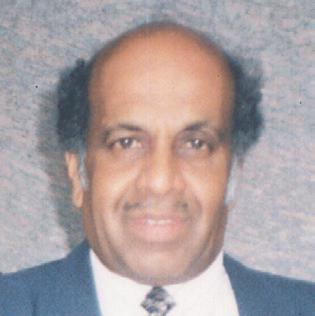
3 minute read
Are traditions sacrosanct?
from 2010-06 Sydney (2)
by Indian Link
Ad infinitum the debate rages on, as to whether traditions should remain sacrosanct, or should adapt to changing times
BY NOEL G DE SOUZA
Every human group develops its own mythology, ways of doing things and celebrating certain events. These are its traditions. Old societies like those in India have long entrenched traditions. Whilst traditions may be difficult to change, there is a constant battle between modernists and traditionalists. There are many who consider that traditions are unalterable just because they have been around for a long time. They consider traditions to be sacrosanct, and that no one has a right to change them.
Tradition even exists in endeavours like farming. There have been battles between traditional and modern ways of farming. During the days when the Green Revolution was being promoted in India, traditional farmers were a difficult lot to convince about the advantages that new methods, which included new strains of crops, would provide. The same can still be said with regard to medicine in remote rural parts of India.
Where social norms are concerned, privileged groups have mostly tried to stick to traditions which favour them, whilst disadvantaged groups battle for change. The advent of democracy and the Indian constitution promoted modernisation and this is not wholly palatable to certain privileged groups. For example, the very notion that all humans are equal is anthema to those who still believe in a feudal society.
Modernisation creates friction between young adults and their elders. The elders may want to stick to traditions, whilst their children are inclined to pursue modern paths. Then there is also the question of gender. Feudal groups have a tendency of not accepting females as equals. Females have, therefore, been traditionally denied education equal to that of males in certain societies and are expected to obey strict rules and commands.
Major conflicts between traditionalists and modernists (generally initiated by the young) have dramatically changed in countries like Japan in the mid-nineteenth century (the Meiji Restoration) and in China a century later, which established the People’s Republic. The latest revolution against a feudal order is that of Nepal. These revolutions were cultural and prove the point that no traditions, however useful, are sacrosanct.
Many of the current conflicts in India are between traditionalists and modernists, that is, between feudalism and those who strive for an egalitarian society. In India, the focus in many rural areas is on marriage. Marriage is considered as the domain of the parents and they are pressured to follow traditional lines in choosing partners for their offspring.
The clan councils (khap panchayats) of northern India follow the old dictum that marriages within the same clan (gotra) or even within the same village are taboo. That is because all children of the same clan are considered as siblings. There are now demands from village elders that this tradition be incorporated into India’s marriage laws.
There are two difficulties: the first of these is that in large parts of India marriage within the same group (such as a sub-caste) is not only permitted but actually favoured; thus, marriages between close relatives in many regions are not uncommon. The next problem is that by prohibiting certain unions, the constitutional rights of adult Indians could get impinged upon.

India has a variety of marriage laws to satisfy various religious groups (these “personal” laws were codified during British times). However, the Special Marriage Act of 1954 through which a couple can get married in a civil ceremony, overrides religious traditions.
The state of Goa has a uniform civil marriage system (inherited from the Portuguese Civil Code, 1867) as being the only legal marriage ceremony. There have been instances when people from other states have gone to Goa to try to get married and have been subjected to that code. An example is that of the famous Indian actor Sanjay Dutt who in 2008, attempted but later withdrew, trying to get married to his thengirlfriend Manyata in Goa. Non-Goans living in Goa are subjected to the civil code in force in Goa.
Traditionalists are now attempting to include caste in census, a move which has divided the central cabinet. Opponents consider this as being “regressive”. Opposing this proposal, Shiv Sena supremo Bal Thackeray rightly asks what would happen when the husband belongs to one caste and the wife to another. Also, what about several casteless religions and even casteless Hindu sects?
A person’s caste is very often what that individual declares his or her caste to be and this mostly originates from that individual’s family tradition. There can be no scientifically verifiable method to disprove such a claim.
Creating legal codes to satisfy India’s diversity of norms and traditions would be very difficult, particularly as there would be constitutional difficulties about the transgression of individual rights. When couples from differing backgrounds want to get married, an increasing number can be expected to opt for the Special Marriage Act.








